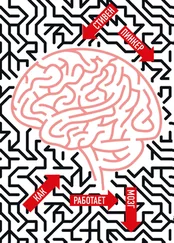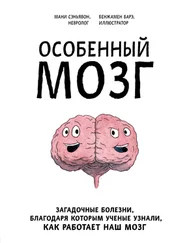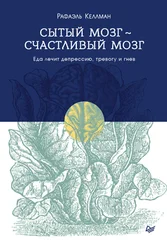Hoffmann, H., E. Janssen, and S. L. Turner, Classical conditioning of sexual arousal in women and men: effects of varying awareness and biological relevance of the conditioned stimulus. Arch Sex Behav, 2004. 33 (1): p. 43–53.
Hatzenbuehler, M.L., J. C. Phelan, and B. G. Link, Stigma as a Fundamental Cause of Population Health Inequalities. American Journal of Public Health, 2013. 103 (5): p. 813–821.
Winston, J.S., J. O’Doherty, and R. J. Dolan, Common and distinct neural responses during direct and incidental processing of multiple facial emotions. Neuroimage, 2003. 20 (1): p. 84–97.
Davila-Ross, M., et al., Chimpanzees (Pan troglodytes) Produce the Same Types of ‘Laugh Faces’ when They Emit Laughter and when They Are Silent. PLOS ONE, 2015. 10 (6): p. e0127337.
Ross, M.D., M. J. Owren, and E. Zimmermann, Reconstructing the evolution of laughter in great apes and humans. Current Biology, 2009. 19 (13): p. 1106–1111.
Panksepp, J. and J. Burgdorf, 50-kHz chirping (laughter?) in response to conditioned and unconditioned tickle-induced reward in rats: effects of social housing and genetic variables. Behavioural brain research, 2000. 115 (1): p. 25–38.
Weisfeld, G.E., The adaptive value of humor and laughter. Ethology and Sociobiology, 1993. 14 (2): p. 141–169.
Pellis, S. and V. Pellis, The playful brain: venturing to the limits of neuroscience. 2013: Oneworld Publications.
Wild, B., et al., Neural correlates of laughter and humour. Brain, 2003. 126 (10): p. 2121–2138.
Selden, S.T., Tickle. Journal of the American Academy of Dermatology, 2004. 50 (1): p. 93–97.
Claxton, G., Why can’t we tickle ourselves? Perceptual and Motor Skills, 1975. 41 (1): p. 335–338.
Berman, R., The Psychology of Tickling And Why It Makes Us Laugh. 2016: Big Think.
Stafford, T., Why all babies love peekaboo. 2014, BBC_Future.
Vrticka, P., J. M. Black, and A. L. Reiss, The neural basis of humour processing. Nat Rev Neurosci, 2013. 14 (12): p. 860–868.
Messinger, D.S., A. Fogel, and K. L. Dickson, All smiles are positive, but some smiles are more positive than others. Dev Psychol, 2001. 37 (5): p. 642–53.
Scott, S., Beyond a joke: how to study laughter, in Brain Flapping. 2014, Guardian: theguardian.com.
Chan, Y.C., et al., Towards a neural circuit model of verbal humor processing: an fMRI study of the neural substrates of incongruity detection and resolution. Neuroimage, 2013. 66: p. 169–76.
Hempelmann, C.F. and S. Attardo, Resolutions and their incongruities: Further thoughts on logical mechanisms. Humor-International Journal of Humor Research, 2011. 24 (2): p. 125–149.
Franklin, R.G., Jr. and R. B. Adams, Jr., The reward of a good joke: neural correlates of viewing dynamic displays of stand-up comedy. Cogn Affect Behav Neurosci, 2011. 11 (4): p. 508–15.
Pessoa, L. and R. Adolphs, Emotion processing and the amygdala: from a ‘low road’to ‘many roads’ of evaluating biological significance. Nature reviews. Neuroscience, 2010. 11 (11): p. 773.
Scott, S.K., et al., The social life of laughter. Trends in cognitive sciences, 2014. 18 (12): p. 618–620.
Prof Sophie Scott. 2017; Available from: http://www.ucl.ac.uk/pals/people/profiles/academic-staff/sophie-scott.
Berk, L.S., et al., Neuroendocrine and stress hormone changes during mirthful laughter. The American journal of the medical sciences, 1989. 298 (6): p. 390–396.
Dunbar, R.I., et al., Social laughter is correlated with an elevated pain threshold. Proc Biol Sci, 2012. 279 (1731): p. 1161–7.
Manninen, S., et al., Social Laughter Triggers Endogenous Opioid Release in Humans. The Journal of Neuroscience, 2017. 37 (25): p. 6125.
Wildgruber, D., et al., Different types of laughter modulate connectivity within distinct parts of the laughter perception network. PloS one, 2013. 8 (5): p. e63441.
Philippon, A.C., L. M. Randall, and J. Cherryman, The Impact of Laughter in Earwitness Identification Performance. Psychiatry, Psychology and Law, 2013. 20 (6): p. 887–898.
Uekermann, J., et al., Theory of mind, humour processing and executive functioning in alcoholism. Addiction, 2007. 102 (2): p. 232–40.
Samson, A.C., et al., Perception of other people’s mental states affects humor in social anxiety. Journal of Behavior Therapy and Experimental Psychiatry, 2012. 43 (1): p. 625–631.
Wu, C. – L., et al., Do individuals with autism lack a sense of humor? A study of humor comprehension, appreciation, and styles among high school students with autism. Research in Autism Spectrum Disorders, 2014. 8 (10): p. 1386–1393.
Raine, J., The evolutionary origins of laughter are rooted more in survival than enjoyment. 2016, The Conversation (UK).
Gervais, M. and D. S. Wilson, The evolution and functions of laughter and humor: A synthetic approach. The Quarterly Review of Biology, 2005. 80 (4): p. 395–430.
Goldstein, J. H. Cross cultural research: Humour here and there. Elsevier.
Provine, R.R. and K. Emmorey, Laughter Among Deaf Signers. Journal of deaf studies and deaf education, 2006. 11 (4): p. 403–409.
Cowan, M.L. and A. C. Little, The effects of relationship context and modality on ratings of funniness. Personality and Individual Differences, 2013. 54 (4): p. 496–500.
Benazzi, F. and H. Akiskal, Irritable-hostile depression: further validation as a bipolar depressive mixed state. Journal of Affective Disorders, 2005. 84 (2): p. 197–207.
WalesOnline. No joking but comedian Rhod is Wales’ sexiest man. 2010 2010–12–04; Available from: http://www.walesonline.co.uk/lifestyle/showbiz/no-joking-comedian-rhod-wales-1878454.
Krebs, R., et al., Novelty increases the mesolimbic functional connectivity of the substantia nigra/ventral tegmental area (SN/VTA) during reward anticipation: evidence from high-resolution fMRI. Neuroimage, 2011. 58 (2): p. 647–655.
Boldsworth, I. The Mental Podcast. 2017; Available from: http://www.ianboldsworth.co.uk/the-mental-podcast/.
Boldsworth, I. The ParaPod. 2017; Available from: http://www.ianboldsworth.co.uk/project/the-parapod/.
Hyman, S.E. and R. C. Malenka, Addiction and the brain: the neurobiology of compulsion and its persistence. Nature reviews. Neuroscience, 2001. 2 (10): p. 695.
Heimberg, R.G., Social phobia: Diagnosis, assessment, and treatment. 1995: Guilford Press.
Читать дальше
Конец ознакомительного отрывка
Купить книгу












